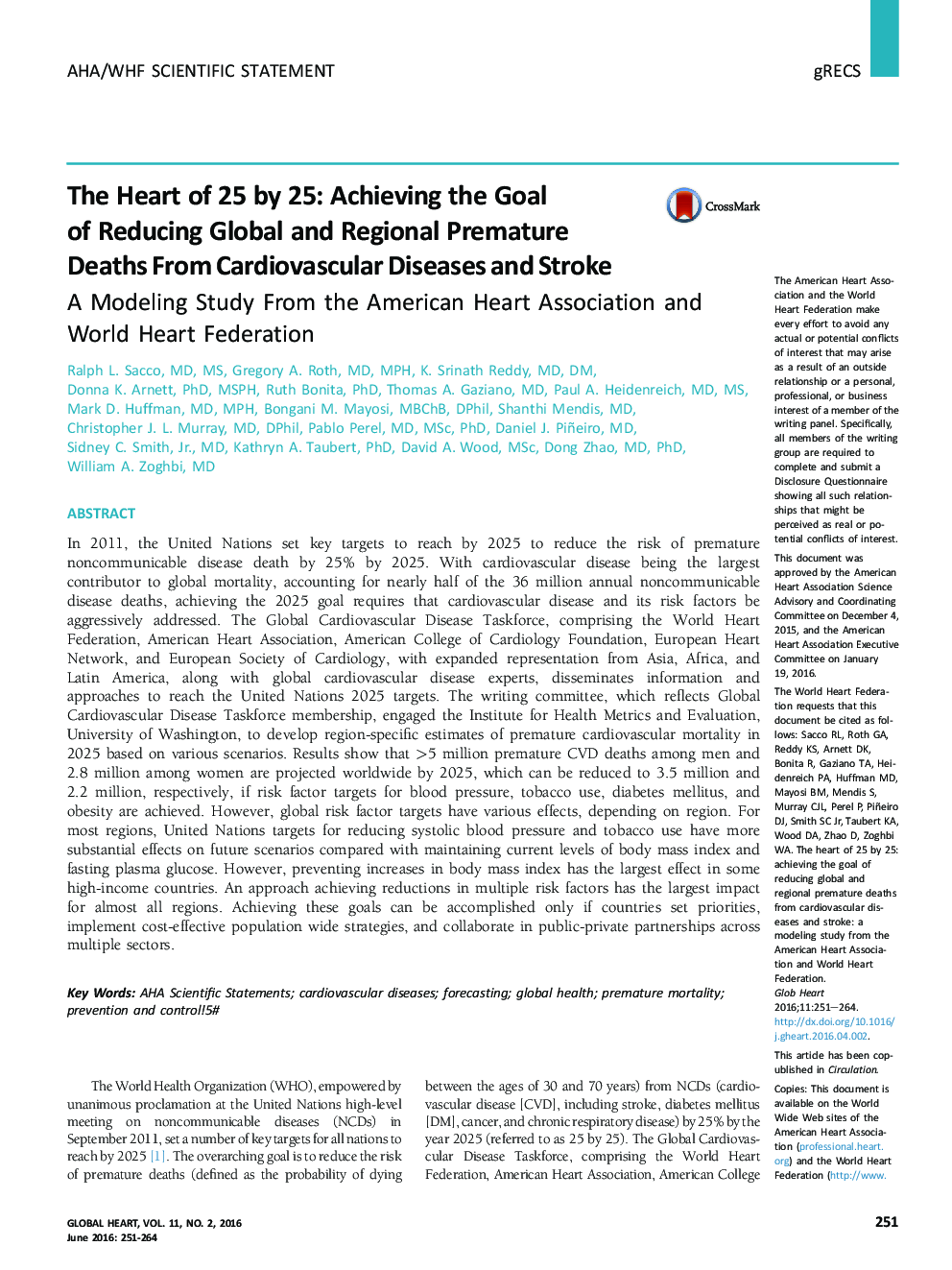| کد مقاله | کد نشریه | سال انتشار | مقاله انگلیسی | نسخه تمام متن |
|---|---|---|---|---|
| 2916157 | 1405385 | 2016 | 14 صفحه PDF | دانلود رایگان |
In 2011, the United Nations set key targets to reach by 2025 to reduce the risk of premature noncommunicable disease death by 25% by 2025. With cardiovascular disease being the largest contributor to global mortality, accounting for nearly half of the 36 million annual noncommunicable disease deaths, achieving the 2025 goal requires that cardiovascular disease and its risk factors be aggressively addressed. The Global Cardiovascular Disease Taskforce, comprising the World Heart Federation, American Heart Association, American College of Cardiology Foundation, European Heart Network, and European Society of Cardiology, with expanded representation from Asia, Africa, and Latin America, along with global cardiovascular disease experts, disseminates information and approaches to reach the United Nations 2025 targets. The writing committee, which reflects Global Cardiovascular Disease Taskforce membership, engaged the Institute for Health Metrics and Evaluation, University of Washington, to develop region-specific estimates of premature cardiovascular mortality in 2025 based on various scenarios. Results show that >5 million premature CVD deaths among men and 2.8 million among women are projected worldwide by 2025, which can be reduced to 3.5 million and 2.2 million, respectively, if risk factor targets for blood pressure, tobacco use, diabetes mellitus, and obesity are achieved. However, global risk factor targets have various effects, depending on region. For most regions, United Nations targets for reducing systolic blood pressure and tobacco use have more substantial effects on future scenarios compared with maintaining current levels of body mass index and fasting plasma glucose. However, preventing increases in body mass index has the largest effect in some high-income countries. An approach achieving reductions in multiple risk factors has the largest impact for almost all regions. Achieving these goals can be accomplished only if countries set priorities, implement cost-effective population wide strategies, and collaborate in public-private partnerships across multiple sectors.
Journal: Global Heart - Volume 11, Issue 2, June 2016, Pages 251–264
